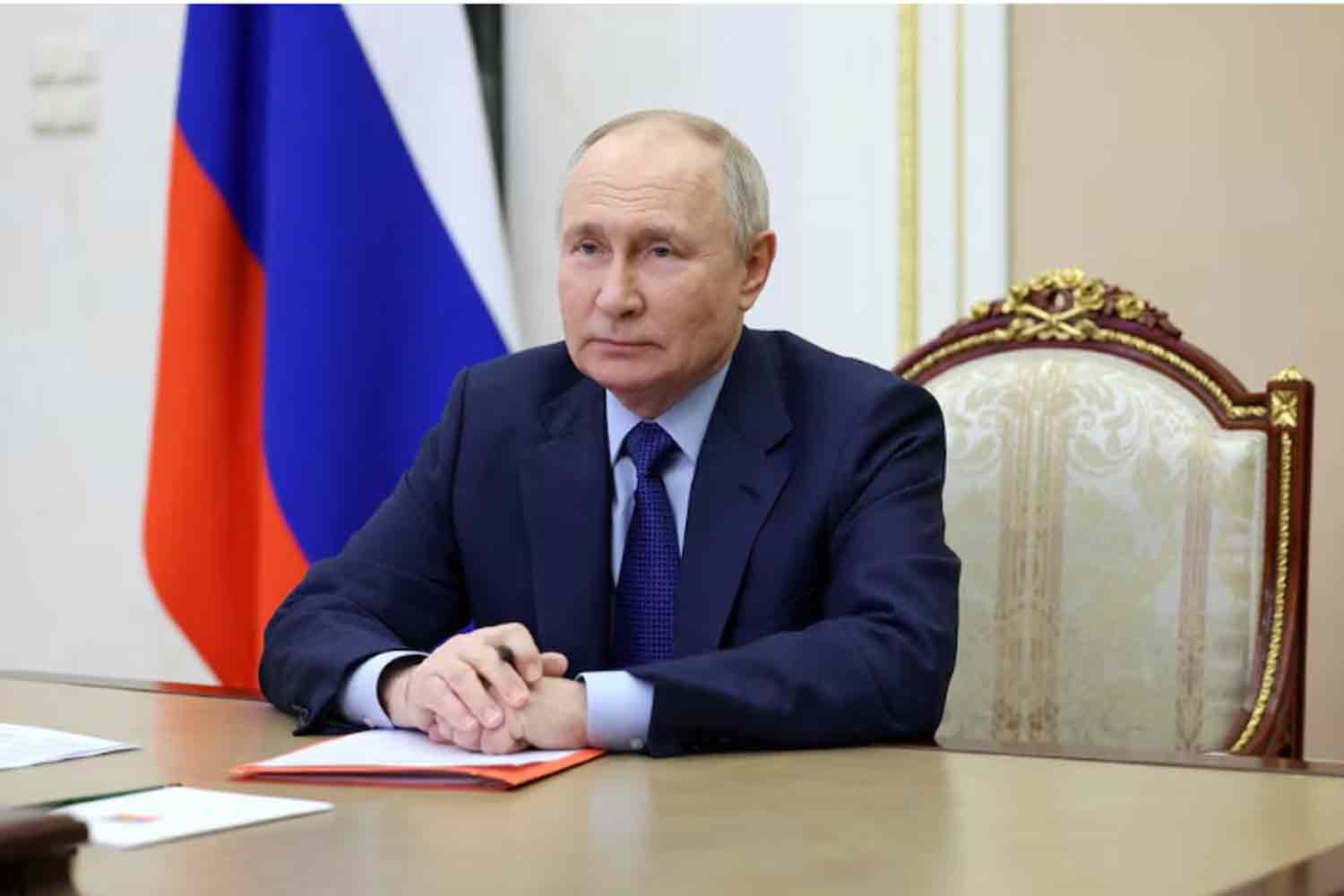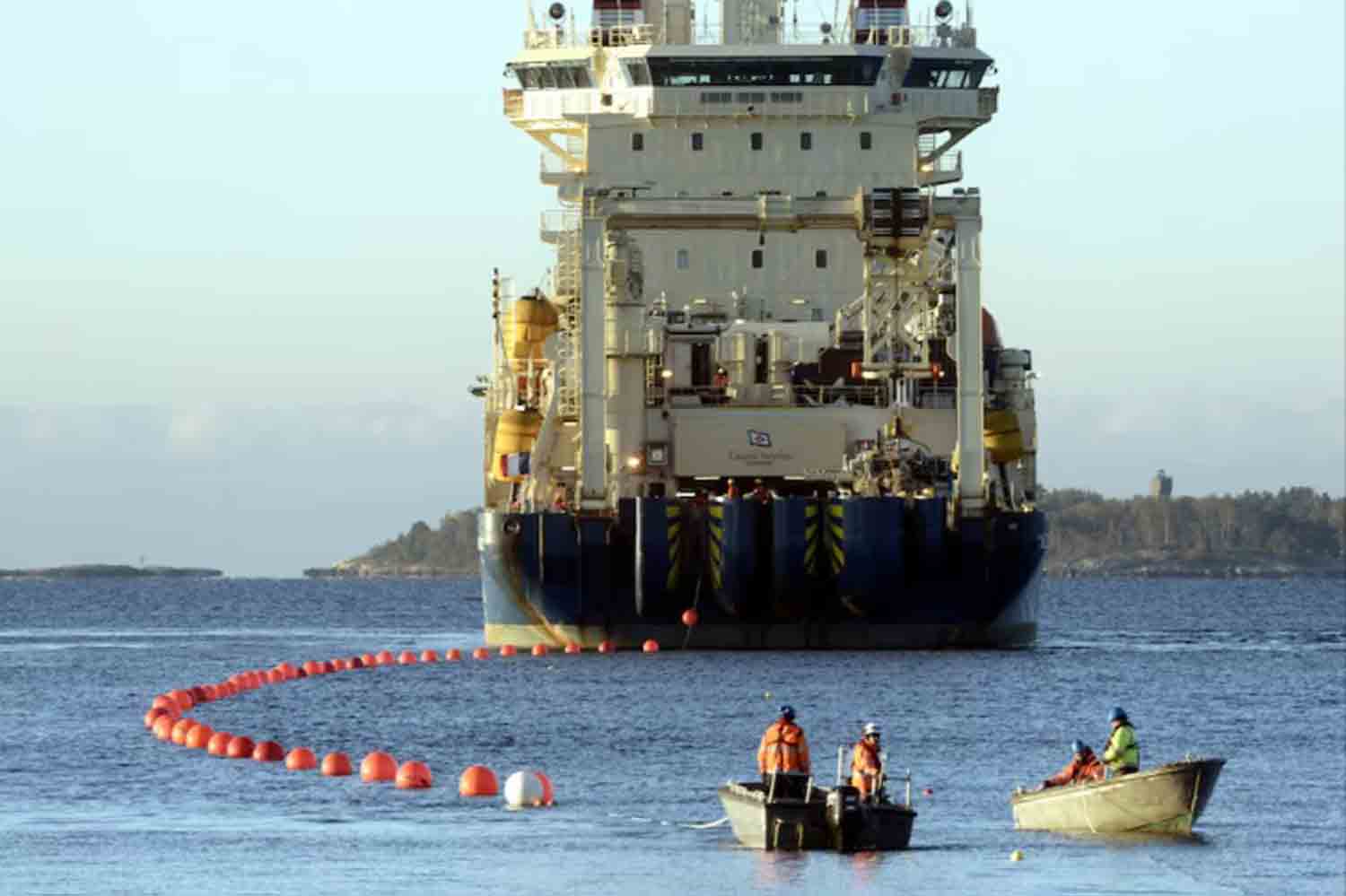Vladimir Putin is willing to engage in discussions regarding a ceasefire in Ukraine with Donald Trump, but he firmly rejects any significant territorial concessions and demands that Kyiv relinquish its aspirations to join NATO, according to five sources familiar with Kremlin perspectives, as reported by Reuters.
As President-elect Trump prepares to return to the White House, he aims to swiftly resolve the ongoing conflict during a period marked by Russia’s growing influence. Moscow currently controls an area of Ukraine comparable in size to the state of Virginia and is making advances at a rate not seen since the early stages of the 2022 invasion.
In the first comprehensive account of President Putin’s potential terms for a deal facilitated by Trump, five current and former Russian officials indicated that the Kremlin might be amenable to freezing the conflict along existing front lines.
There could be opportunities for negotiation regarding the specific division of the four eastern regions: Donetsk, Luhansk, Zaporizhzhia, and Kherson, as suggested by three of the sources, who requested anonymity due to the sensitive nature of the discussions.
While Russia asserts that these four regions are entirely part of its territory, protected by its nuclear capabilities, its military currently controls 70-80% of the area, with approximately 26,000 square kilometers still under Ukrainian control, according to open-source data on the front lines.
Additionally, Russia might consider withdrawing from the relatively small territories it occupies in the Kharkiv and Mykolaiv regions, located in northern and southern Ukraine, as noted by two of the officials.
This month, Putin stated that any ceasefire agreement must take into account the “realities” on the ground, expressing concern that a temporary truce would merely provide the West with an opportunity to rearm Ukraine.
During a discussion with the Valdai group on November 7, Putin remarked, “Without neutrality, it is hard to envision any amicable relations between Russia and Ukraine.” He elaborated, “This situation would imply that Ukraine would be perpetually exploited as a tool by those with ill intentions, ultimately harming the interests of the Russian Federation.”
According to two sources, the outgoing U.S. President Joe Biden’s choice to permit Ukraine to launch American ATACMS missiles into Russian territory could hinder and prolong any potential resolution, while also intensifying Moscow’s demands as hardliners advocate for a larger portion of Ukraine. On Tuesday, Kyiv reportedly utilized the missiles to target Russian land for the first time, a move that Moscow condemned as a significant escalation.
If a ceasefire is not established, the two sources indicated that Russia would continue its military operations. Kremlin spokesman Dmitry Peskov informed Reuters shortly before reports of the ATACMS strikes that “Putin has already indicated that freezing the conflict is not a viable option.” He added, “The missile authorization represents a very perilous escalation from the United States.”
The Ukrainian foreign ministry has not yet responded to a request for comment regarding this article.
Steven Cheung, communications director for Trump, told Reuters about the incoming U.S. president: “He is the only individual capable of uniting both parties to negotiate peace and work towards ending the conflict and halting the violence.”
Real estate mogul Donald Trump, who authored the 1987 book “Trump: The Art of the Deal,” has expressed his intention to engage directly with President Putin in pursuit of a peace agreement. However, he has not provided specifics on how he plans to mediate between the conflicting parties, both of which show little inclination to de-escalate.
Ukrainian President Volodymyr Zelenskiy has asserted that his nation will not cease its efforts until every Russian soldier is removed from its territory, adhering to the borders established following the Soviet Union’s dissolution in 1991. Nevertheless, senior U.S. military officials have indicated that this goal is quite ambitious.
On June 14, Putin outlined his initial conditions for an immediate cessation of hostilities: Ukraine must abandon its aspirations to join NATO and withdraw all troops from the four regions that Russia claims and largely controls.
SECURITY ASSURANCES, MILITARY RESTRICTIONS
While Russia firmly opposes Ukraine’s NATO membership and the presence of NATO forces on its territory, it is willing to discuss security assurances for Kyiv, as reported by five current and former officials. Additional concessions that the Kremlin may seek from Ukraine include limiting the size of its military and ensuring the unrestricted use of the Russian language.
Dimitri Simes, a prominent expert on U.S.-Russia relations who emigrated from the Soviet Union in 1973, suggested that a ceasefire could be achieved relatively quickly to halt the conflict, which has resulted in the deaths of hundreds of thousands of soldiers and the displacement of millions of civilians. However, he cautioned that reaching a comprehensive and enduring agreement that addresses the security concerns of both Ukraine and Russia would be exceedingly difficult. “A significant compromise, in my opinion, would be challenging to achieve given the substantial differences in the positions of both parties.”
HARSH TRUTH: RUSSIA ACHIEVED ITS OBJECTIVES
Russia currently controls approximately 18% of Ukraine, encompassing all of Crimea, which it annexed in 2014, along with 80% of the Donbas region—specifically the Donetsk and Luhansk areas—and over 70% of the Zaporizhzhia and Kherson regions. Additionally, it occupies nearly 3% of the Kharkiv region and a small portion of Mykolaiv.
In total, Russia has seized more than 110,000 square kilometers of Ukrainian land, while Ukraine retains about 650 square kilometers of the Kursk region in Russia. Domestically, President Putin could present a ceasefire agreement that allows Russia to maintain control over most of Donetsk, Luhansk, Zaporizhzhia, and Kherson as a triumph, framing it as a measure to protect Russian-speaking populations in eastern Ukraine and to secure the land corridor to Crimea, according to one source.
The status of Crimea itself remains non-negotiable, as asserted by Russian officials.
A senior official with insight into high-level Kremlin discussions indicated that the West must confront the “harsh truth” that its support for Ukraine has not been sufficient to prevent Russia from achieving its objectives in the conflict.
Putin, who previously served as a KGB lieutenant colonel and witnessed the dissolution of the Soviet Union while in Dresden, made the decision to invade Ukraine with limited advice from a small circle of trusted advisors, as reported by ten Russian sources familiar with Kremlin perspectives.
He will also have the final say on any potential ceasefire, according to five current and former officials.
The Kremlin leader characterizes what he terms the “special military operation” in Ukraine as a pivotal moment in which Moscow has finally confronted what he perceives as Western arrogance, particularly regarding NATO’s eastward expansion and interference in the politics of regions that Moscow considers within its sphere of influence, including Georgia and, significantly, Ukraine.
In contrast, Kyiv and Western nations argue that the invasion represents an unlawful attempt to seize Ukrainian territory.
When inquired about the potential characteristics of a ceasefire, two Russian sources pointed to a draft agreement that was nearly finalized in April 2022 following discussions in Istanbul. This draft has been mentioned by Putin publicly as a potential foundation for a future agreement.
According to the draft, which Reuters has reviewed, Ukraine would need to commit to permanent neutrality in exchange for international security assurances from the five permanent members of the U.N. Security Council: the United Kingdom, China, France, Russia, and the United States.
One Russian official emphasized that an agreement would only be possible if Ukraine received security guarantees, stating, “The challenge lies in how to prevent a deal that could entangle the West in a direct confrontation with Russia in the future.”
Discover more from Defence Talks | Defense News Hub, Military Updates, Security Insights
Subscribe to get the latest posts sent to your email.





